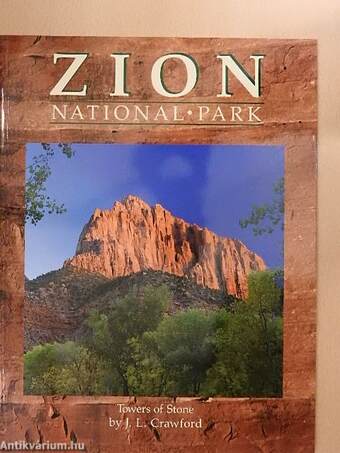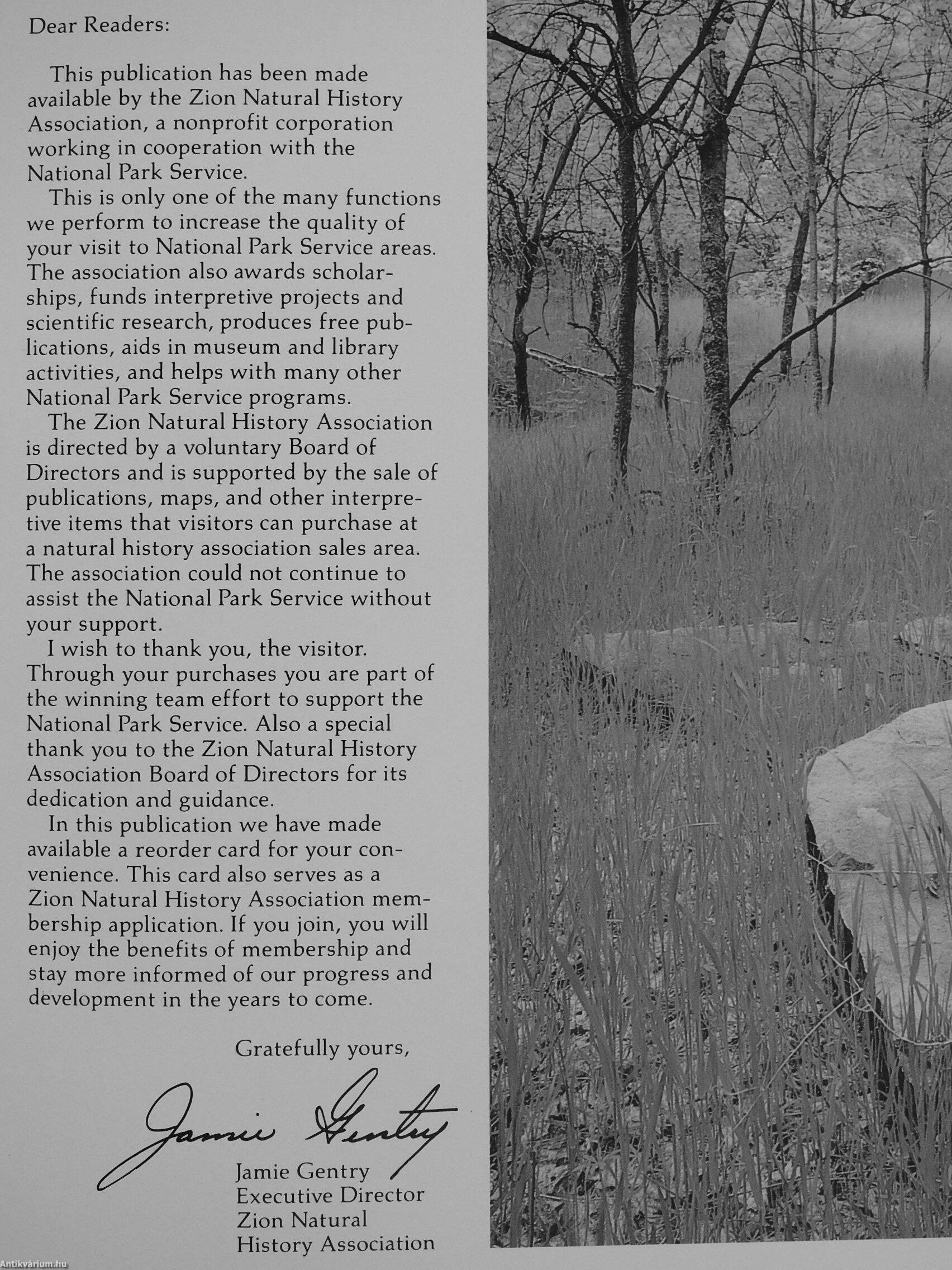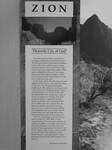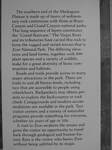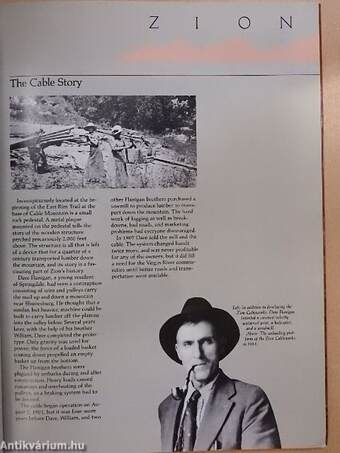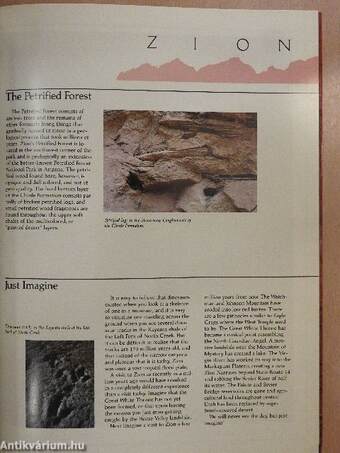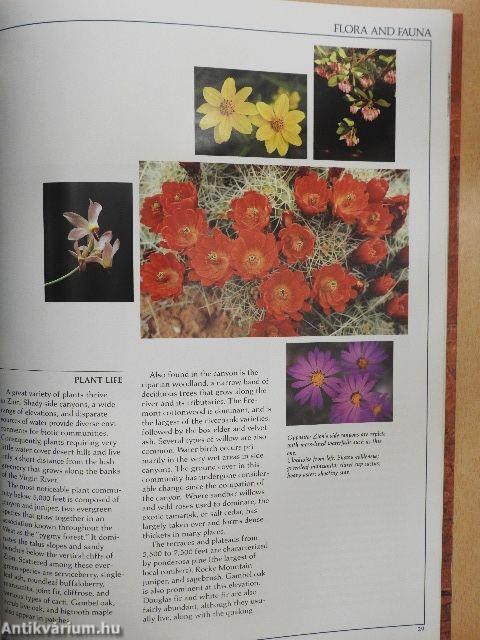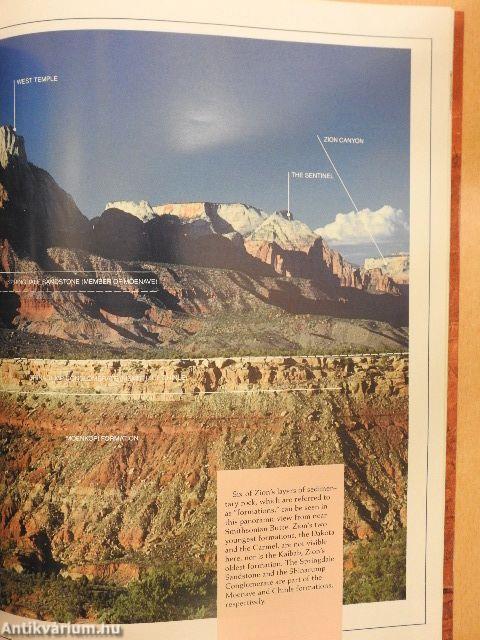1.060.504
kiadvánnyal nyújtjuk Magyarország legnagyobb antikvár könyv-kínálatát

VISSZA
A TETEJÉRE
JAVASLATOKÉszre-
vételek
Zion National Park
Towers of Stone
| Kiadó: | Albion Publishing Group |
|---|---|
| Kiadás helye: | Santa Barbara |
| Kiadás éve: | |
| Kötés típusa: | Ragasztott papírkötés |
| Oldalszám: | 46 oldal |
| Sorozatcím: | |
| Kötetszám: | |
| Nyelv: | Angol |
| Méret: | 30 cm x 23 cm |
| ISBN: | 1-880352-00-1 |
| Megjegyzés: | Színes és fekete-fehér fotókkal és illusztrációkkal. További kapcsolódó személyek a műben. |
naponta értesítjük a beérkező friss
kiadványokról
naponta értesítjük a beérkező friss
kiadványokról
Előszó
TovábbFülszöveg
Heavenly City of God
The Zion area has seen a succession of human inhabitants in its long history. The Anasazi Indians had lived in dwellings built in the steep-walled canyons many centuries prior to the arrivai of the Mormons in the late nineteenth century. Then quite suddenly the Anasazis were gone, taking with them their complex civiliza-tion, and leaving the Paiute Indians as the next residents of the area.
In the early 1860s the Mormons arrived, displacing the Paiutes, who had lived close to the land. The Mormon philosophy emphasized self-sufficiency and hard work in the service of a heavenly master. They imprinted their way of life on the land, leaving behind such conspicuous signs of recent occupation as terraces that held irrigation ditches, fragments of rock fences, orchards, and a remnant of the Zion Cableworks. It is certain that the Mormon zealots noticed the striking beauty of the sculptured canyon setting they inhabited, but most merely looked, praised the Lord,... Tovább
Fülszöveg
Heavenly City of God
The Zion area has seen a succession of human inhabitants in its long history. The Anasazi Indians had lived in dwellings built in the steep-walled canyons many centuries prior to the arrivai of the Mormons in the late nineteenth century. Then quite suddenly the Anasazis were gone, taking with them their complex civiliza-tion, and leaving the Paiute Indians as the next residents of the area.
In the early 1860s the Mormons arrived, displacing the Paiutes, who had lived close to the land. The Mormon philosophy emphasized self-sufficiency and hard work in the service of a heavenly master. They imprinted their way of life on the land, leaving behind such conspicuous signs of recent occupation as terraces that held irrigation ditches, fragments of rock fences, orchards, and a remnant of the Zion Cableworks. It is certain that the Mormon zealots noticed the striking beauty of the sculptured canyon setting they inhabited, but most merely looked, praised the Lord, and attended to their individual daily tasks in the community.
Zion was proclaimed a national monument on July 31,1909. Now a major national park with an annual Visitation of nearly 2.5 million, it includes much more than Zion Canyon. Over the years, the park has been expanded to its present size of 229 square miles. It now extends north-westward across the highlands of the Kolob Terrace, encompassing the Finger Canyons of the Kolob, which border Interstate 15.
HB0|
(continued on back flap)
The southern end of the Markagunt Plateau is made up of layers of sedimen-tary rock continuous with those at Bryce Canyon and Grand Canyon national parks. This long sequence of layers constitutes the "Grand Staircase." The Virgin River and its tributaries have carved this rock to form the rugged and varied terrain that is Zion National Park. The differing élévations and land forms, together with 899 plant species and a variety of wildlife, make for a great diversity of biotic com-munities and habitats.
Roads and trails provide access to many major attractions in the park. There are trails to suit all fitness levels, including two that are accessible to people using wheelchairs. Backpackers may obtain per-mits to explore the backcountry or rock climb. Campgrounds and modern accommodations are available in the park. Two visitor centers and a variety of naturalist programs provide something for everyone, whether six years of age or 106.
A visit to Zion awakens the senses and gives the visitor an opportunity to travel back through geological and human his-tory. Rare is the visitor who leaves Zion without being uplifted by its magie. Vissza
Témakörök
- Természettudomány > Növényvilág > Nemzeti parkok, arborétumok
- Idegennyelv > Idegennyelvű könyvek > Angol > Természettudományok > Földrajz
- Idegennyelv > Idegennyelvű könyvek > Angol > Természettudományok > Egyéb
- Természettudomány > Földrajz > Általános természeti földrajz > Geomorfológia
- Természettudomány > Földrajz > Kontinensek földrajza > Téma szerint > Felszín
- Természettudomány > Földrajz > Kontinensek földrajza > Téma szerint > Növényzet, állatvilág
- Természettudomány > Földrajz > Kontinensek földrajza > Topográfia szerint > Amerika
- Természettudomány > Földrajz > Idegen nyelv > Angol
J. L. Crawford
J. L. Crawford műveinek az Antikvarium.hu-n kapható vagy előjegyezhető listáját itt tekintheti meg: J. L. Crawford könyvek, művekMegvásárolható példányok
Nincs megvásárolható példány
A könyv összes megrendelhető példánya elfogyott. Ha kívánja, előjegyezheti a könyvet, és amint a könyv egy újabb példánya elérhető lesz, értesítjük.



